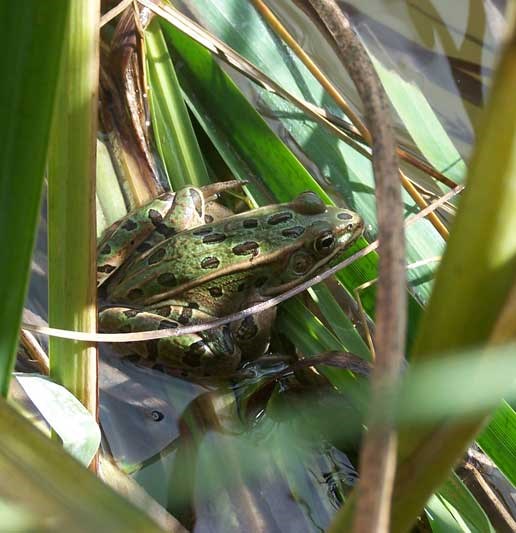
The Niobrara River banks create a wetland and riparian area that is a haven for amphibians, who need moisture to survive and reproduce. Amphibians are animals that have two life stages, a larval, aquatic form and an adult, terrestrial form. Tadpoles are the larval stage of frogs and toads and live in water until developing legs and lungs. Salamanders have a similar larval stage, and then develop lungs and can live outside of water but still require moisture. The barred tiger salamander is the largest land-dwelling salamander in the United States, ranging in length from 6" to 13½". These animals burrow in damp meadows and in abandoned burrows of small mammals. They mate in backwater pools and lay egg masses on submerged debris. Woodhouse's toads are found in areas of irrigation, such as around the Visitor's Center and Museum and in riparian areas. The toads prefer sandy soils to burrow in and spend most of the day hiding, coming out at night to catch flies. The chorus frog is greenish brown and active mostly at night, but can be spotted in the early morning in grassy areas that are dry or swampy. Text by Kimberly Howard, Biological Technician, Agate Fossil Beds National Monument, August 7, 2002. |
Last updated: April 10, 2015
